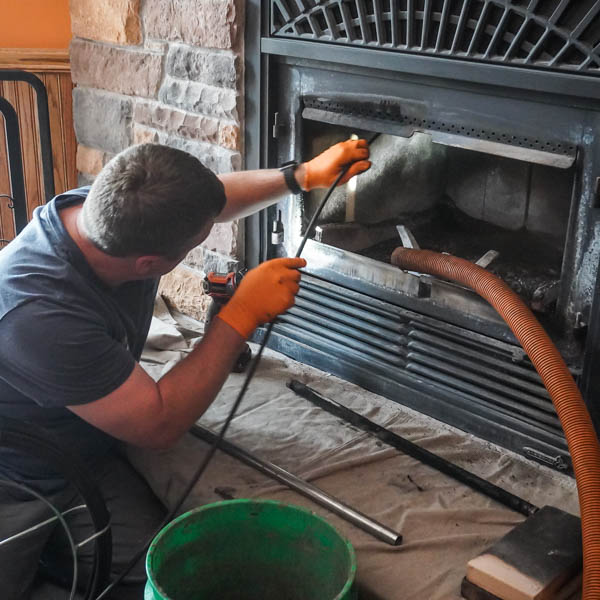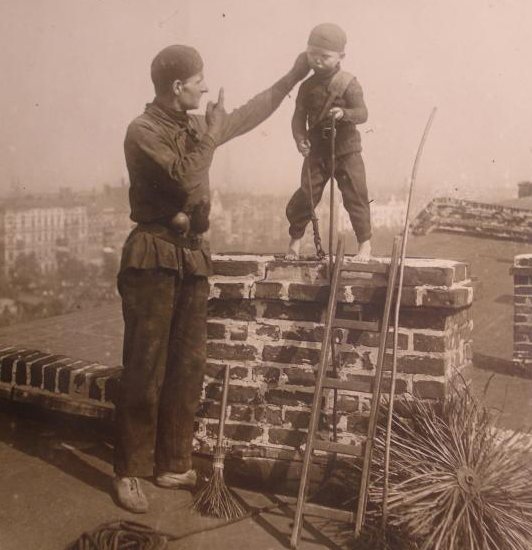Why Routine Chimney Clean San Jose is Crucial for Fire Safety
Wiki Article
Maintain Reliable Heating Systems: The Relevance of Routine Chimney Cleansing
Past simple appearances, smokeshaft upkeep offers a pivotal role in the functionality and safety of a heating system. The repercussions of neglecting this important upkeep can lead to dire consequences, making it vital for house owners to prioritize routine chimney cleaning as a key part of their house upkeep regimen.
Value of Chimney Maintenance
Regular smokeshaft upkeep is necessary for making sure the security and efficiency of your home heating unit. Over time, chimneys gather creosote, an extremely flammable substance generated by melting wood, which can lead to dangerous smokeshaft fires if not properly gotten rid of with routine cleaning. In addition, debris such as fallen leaves, branches, or even animal nests can block the smokeshaft, triggering smoke to support right into your home and exposing owners to dangerous gases like carbon monoxide.Furthermore, a properly maintained smokeshaft promotes effective heating by permitting for appropriate airflow and air flow. When the chimney is blocked or obstructed, the fire place or heating home appliance may not work optimally, causing decreased home heating efficiency and possibly greater energy costs. By scheduling normal smokeshaft assessments and cleansings, property owners can ensure and stop pricey repair work that their furnace runs safely and successfully throughout the colder months. Investing in expert smokeshaft maintenance is a little cost to spend for the comfort and convenience it offers your home.
Avoiding Chimney Obstructions

In addition to soot, particles like fallen leaves and branches can find their way right into the smokeshaft, particularly if a chimney cap is not set up or is harmed. Applying preventive steps such as setting up a smokeshaft cap and organizing regular smokeshaft inspections are effective methods to alleviate the threat of clogs and ensure the safe operation of your heating system.
Enhancing Heater Effectiveness
Improving the effectiveness of a furnace is necessary for taking full advantage of efficiency and lowering energy usage in industrial and property setups. One secret technique to improve furnace effectiveness is by guaranteeing appropriate insulation. Insulation assists avoid heat loss, allowing the heating system to keep the wanted temperature level better. Furthermore, upgrading to a programmable thermostat can considerably improve efficiency by managing temperature levels based on occupancy patterns, reducing power waste when home heating is not needed. Regular upkeep, such as cleansing or replacing air filters, is crucial for optimum efficiency. Dirty filters limit air movement, making the system work harder and consume even more energy. Conducting yearly expert evaluations can additionally recognize and deal with any concerns that may be hindering performance. One more way to improve efficiency is by securing ducts to prevent leakages, ensuring that warmed air reaches its designated location without getting away. By implementing these approaches, heating systems can run better, causing cost financial savings and reduced ecological impact.Lessening Fire Hazards
Normal smokeshaft cleansing plays a critical duty in lowering the threat of fires. By making sure that the smokeshaft is totally free and clean of blockages, such as nests or particles, house owners can reduce this danger.Along with smokeshaft upkeep, appropriate installation and upkeep of home heating home appliances are vital for fire prevention. Faulty circuitry, malfunctioning elements, or overheating can all lead to possible fire dangers - chimney clean san jose. Regular inspection by a certified professional can assist identify and address these concerns before they rise. Additionally, keeping combustible materials at a safe range from heating moved here resources and article using safety barriers can better minimize the risk of fires in the home. By taking these aggressive steps, homeowners can take pleasure in a cozy and relaxing environment without jeopardizing on safety.

Making Certain Safe Indoor Air Quality
Interior air contamination can stem from different resources, including cooking fumes, cleaning products, pet dander, and also the burning by-products of heating click to investigate systems. When chimneys are not cleaned routinely, they can become obstructed with soot, creosote, and debris, leading to poor ventilation and possible backdrafts of dangerous gases like carbon monoxide right into the home.
Normal chimney cleaning is crucial in making sure that these unsafe compounds are successfully expelled outside, avoiding them from flowing within the indoor atmosphere. Focusing on chimney maintenance as part of total indoor air quality initiatives is an aggressive step towards producing a comfortable and risk-free living setting.
Final Thought

Over time, smokeshafts build up creosote, a highly combustible compound produced by melting wood, which can lead to dangerous smokeshaft fires if not appropriately removed via routine cleaning. When the smokeshaft is blocked or blocked, the fire place or heating device may not operate efficiently, leading to decreased home heating effectiveness and possibly greater energy expenses.In addition to residue, debris like fallen leaves and branches can locate their means into the smokeshaft, especially if a smokeshaft cap is not set up or is harmed. Carrying out preventive procedures such as installing a smokeshaft cap and organizing routine smokeshaft evaluations are reliable ways to alleviate the risk of obstructions and ensure the risk-free procedure of your heating system.
It is necessary to prioritize chimney upkeep to avoid expensive fixings and potential health and wellness threats associated with an ignored smokeshaft.
Report this wiki page